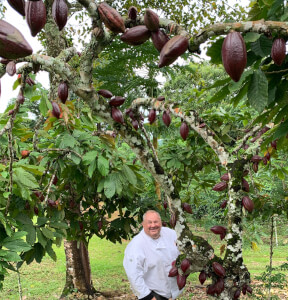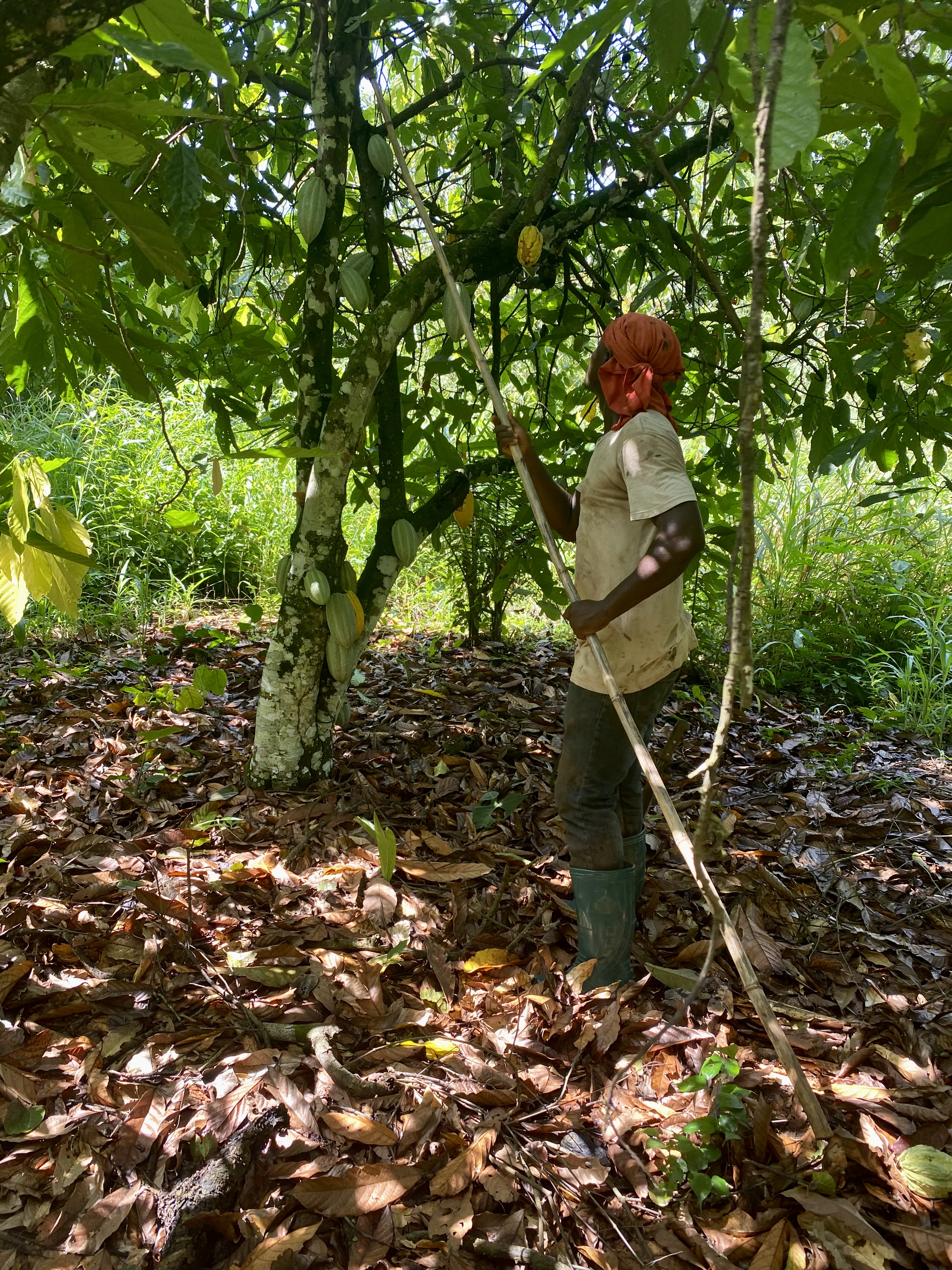 Rethinking Yield, Listening to the Land, and Why Age Matters in Chocolate
Rethinking Yield, Listening to the Land, and Why Age Matters in Chocolate
When I travel to origin, I always make time to sit with the farmers. Under the shade of a mango tree or on a wooden stool beside the fermentation boxes, there’s always space for stories, laughter, and questions — and one of the most common things I hear is this:
“They told me I should pull up my old trees — said they’re past it.”
It comes from well-meaning agricultural officers, cocoa authorities, or buying companies — often with a promise of increased yields, disease resistance, or better market access. The message is consistent:
"If your tree is over 30 years old, it’s time to rip it out and start again."
But is that really true?
A Conversation I’ll Never Forget
My friend Nelson, a seasoned cocoa farmer in West Africa, once told me about a government replanting initiative. He was given 1,000 hybrid saplings, part of a national scheme to boost productivity and modernise cocoa farming. A year later, only two had survived.
That’s not a typo. From a thousand hopeful young trees… just two.
The rest? Gone to drought, pest damage, poor rootstock, or simple bad luck. But more than that, they were lost because the system they were planted into wasn’t prepared to support them — no shade trees, no organic matter, no follow-up training, no long-term support.
Meanwhile, some of Nelson’s 50-year-old trees — gnarled, sun-dappled, lovingly pruned — were still yielding strong, rich, deeply flavoured pods.
And that’s when I started asking the real question:
So… How Long Can a Cacao Tree Live?
The standard answer is “about 25 years.”
That’s what you’ll read in many textbooks, and what’s still preached in cocoa agronomy training sessions.
But in truth, that number is often based on commercial efficiency, not on the biological limits of the tree.
Yes, yields can decline over time — but in most cases, that’s not because the tree is old. It’s because it’s been neglected. Think poor pruning, no composting, compacted soil, nutrient depletion, or disease stress due to lack of biodiversity.
Cacao is a tree, not a machine. And trees, like people, respond to how they’re treated.
Give them what they need, and they’ll surprise you.
With Care, a Cacao Tree Can Live — and Produce — for Over 100 Years
Yes — a full century of chocolate, if the tree is looked after properly.
In agroforestry systems, where cacao is interplanted with bananas, plantains, timber, legumes, and medicinal plants, older cacao trees often continue to yield well into their 70s, 80s, or beyond. They become part of the ecosystem. Their roots dig deep. They stabilise the soil. They hold moisture. They communicate underground. And the beans? Often more nuanced, balanced, and mature in flavour.
There’s something truly special about the chocolate that comes from an old tree — as if the wisdom of age is infused in the pod.
Replacing Trees vs. Regenerating Them.jpg)
That’s not to say replanting is always wrong — far from it.
Old, diseased, or unproductive trees do sometimes need to be removed, especially where swollen shoot virus or other pathogens are present.
But there’s a huge difference between clear-felling a plot and rehabilitating it.
Rehabilitation means:
Targeted pruning (rather than hacking down entire trees)
Applying compost and organic matter to restore soil life
Encouraging natural shade trees and canopy cover
Using grafting techniques to introduce high-yielding scions onto older rootstock
And perhaps most importantly, it means listening to the farmer and respecting the rhythm of the land.
A Farmer’s Words That Changed the Way I Think
In São Tomé, a cocoa farmer once looked at me and said:
“If you listen to the tree, it’ll tell you when it’s tired or sick. But most of the time, it’s just hungry… or thirsty.”
That stuck with me.
Because sometimes, the difference between a “failing” tree and a thriving one is just a bit of care, a bit of time, and the willingness to observe instead of replace.
The Bigger Picture: Climate, Conservation, and Flavour
With increasing climate pressures — from droughts to flooding to shifting seasons — the resilience of older trees with deeper roots becomes even more valuable. They’re more stable. They’ve adapted to local conditions. They’ve survived.
And from a flavour perspective? These trees often produce beans with real personality. Beans that tell the story of the land they come from, shaped by time, terroir, and tradition.
Is that something we really want to lose in the name of efficiency?
So, Should We Rethink What We Mean by “Yield”?
Absolutely.
Yield can’t just mean kilos per hectare. That’s like judging a great chef purely by plate count, not taste or impact.
Let’s broaden our definition:
Yield of flavour
Yield of biodiversity
Yield of ecosystem health
Yield of farmer well-being
Yield of cultural preservation
Because in the end, a cacao tree isn’t just a vehicle for chocolate.
It’s a living part of a community, a story, and a landscape.
Let’s Talk
Have you worked with older trees?
Seen the difference that pruning and care can make?
Or perhaps you’ve wrestled with the decision to replant?
I'd love to hear your thoughts — especially if you're a grower, chocolate maker, or someone who’s spent time at origin.
Because if we want to protect the future of fine flavour cocoa, we have to start by respecting the trees that got us here.
Let’s stop treating age as a problem — and start seeing it as a strength.
